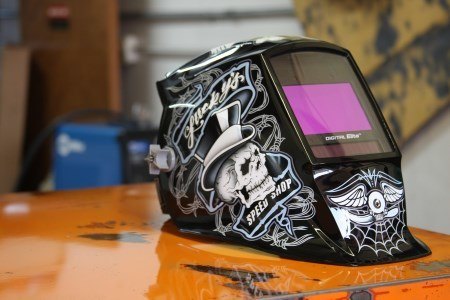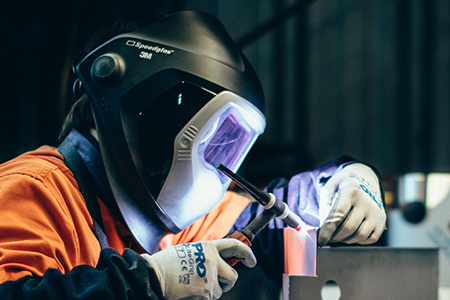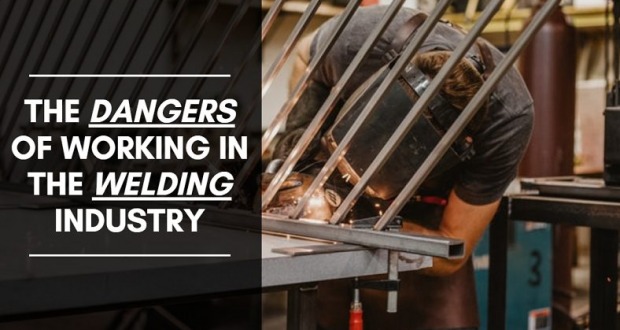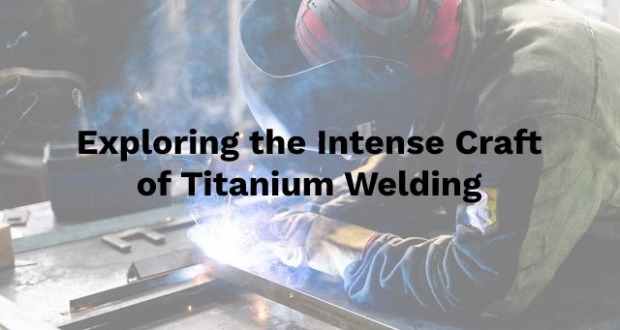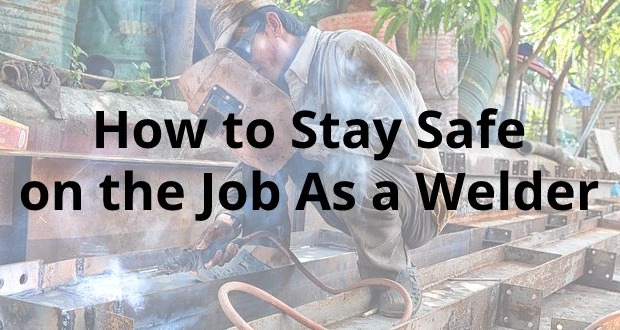Safety is a critical component when it comes to engaging a career in welding. When people are practicing safety precautions, welding may become a proper occupation. If welders do not follow safety measures, then the person is at risk to numerous hazards that could be potentially dangerous to his health. Fumes and gases, fire, explosions, electric shock, and injuries from improper use of tools can lead to short-term or long-term disability.
Why You Need a Welding Helmet?
Welders are well aware of the hazards that come with welding, and that’s why they need the proper safety gear to do their job correctly and safely. One of those gears is the welding helmet, which is primary protective equipment for the welder’s face. However, it is essential for workers to know the welding helmet parts and learn what suits them best for optimal work rate. We will dive into specifics of the safety gear to help welders figure out what they need to know when buying their welding helmet.
Different Types of Welding Helmets
There are specific standards and impact tests that welding helmets need to meet to pass safety regulations. However, welding helmet parts differ significantly to fit the welder’s needs during the job. Two types of helmets pose different features that wearers can maximize during use. Both brands meet National Safety Standards and can increase productivity as well as add comfort.
Passive
Passive welding helmets have dominated the welding scene from its inception as they prove how highly effective they are from shielding the face and protecting the eyes of welders. A passive helmet often comes with number 10 fixed-shade lens. The glass eye panel also has infrared and ultraviolet protection to keep eyes safe from harmful rays. Since it has fewer welding helmet parts, Passive helmets are budget-friendly headgears.
Auto Darkening
Auto-darkening welding helmets consist of a liquid crystal display with numerous types of power sources like solar power or battery. When the welder is not using the helmet, the shade sits at number 3 or 4, which are close to natural lighting. The inactive shades allow the user to inspect welding projects without having to take the helmet off. The lens activates when the welder is starting on their work. Sensors detect the arc and automatically adjust to the required shade by the user. The auto-darkening helmet may have at least four sensors, which makes it easier for the equipment to detect false activations like the sun’s glares.
Factors in Choosing the Right Welding Helmet
Comparing passive to auto-darkening helmets is common in welding. To get the best out of the specific helmet, we need to dive into the specifics of the welding helmet parts and the advantages they carry. Here are some of the things you can consider when buying your welding helmet.
Fixed or Variable Shade
Creators design passive welding helmets with fixed number 10 shades as it is the most common shade needed when engaging in the welding process. If a welder does the same welding process involving the materials with equal thickness, then it is advisable to stick with the passive helmet.
Auto-darkening helmets, meanwhile, offer different shades to adjust to the brightness of the welding arc. It gives welders the best view possible while engaging in welding applications, boosting productivity in levels that passive helmets cannot. The active shades that are available while welding range from 9 to 13.
Lens Reaction Time
Since passive helmets have a fixed number 10 shades, the lens will provide ample protection for the eyes without the need for reaction time. Most arcs require a 10 or less shade, making passive welding helmets a solid choice for welders. However, there are instances that you may need higher shades for thicker materials, which makes auto-darkening welding helmets a good option. The reaction time of the lenses for auto-darkening helmets can rate as fast as 1/20,000 of a second, ensuring eye protection with every arc.
Number of Sensors
Passive helmets do not have sensors as it maintains a consistent shade for all welding projects. Auto-darkening helmets, meanwhile, have up to four sensors to provide coverage for eyes. Out of position welding may obstruct sensors from figuring out how dark a shade the welder needs. Four sensors will help take out that problem for welders.
Adjustable Sensitivity Control
Auto-darkening helmets make use of sensors to adjust how much brightness will enter the lenses. Sensitivity control becomes useful when the welder is working on a project with low amperages, which means that arcs are not as bright as standard welding processes. Passive helmets, meanwhile, do not have sensitivity control.
Adjustable Delay Controls
Delay controls are useful features in an auto-darkening helmet as it enables the user to set how long lens need to stay dark after the welding process. This feature allows welders to have enough time to rest and ensure that the eyes do not suffer from glare. Since the passive helmet does not have delay controls, it continues to supply eye support for the welder without risks of being exposed to bright arcs.
View Size that the Lens Provide
Both the passive helmet and the auto-darkening helmet boast viewing sizes that range from six to nine square inches. When choosing the proper welding helmet, it is up to the person’s preference whether a bigger or smaller view of the material during welding.
Other Factors to Consider When Choosing Your Welding Helmet
Passive helmets are lightweight since it does not have the gadgets that an auto-darkening helmet has. It helps welders prevent neck strain and fatigue while increasing comfort. The auto-darkening helmet, meanwhile, provides a way for welders to be more productive and efficient at the job.
Both helmets also offer shock absorption and heat protection to avoid injuries and burns while on the welding process. The helmets are also known for their longevity and endurance.
Conclusion
Passive and auto-darkening welding helmets are excellent choices when it comes to the job. Both head gears possess advantages that users can maximize for better productivity. The passive helmet’s best strength is its consistent and lightweight structure that allows welders to focus on their projects. The auto-darkening helmet, meanwhile, provides users with an arsenal of advanced gadgets that can help boost productivity.


